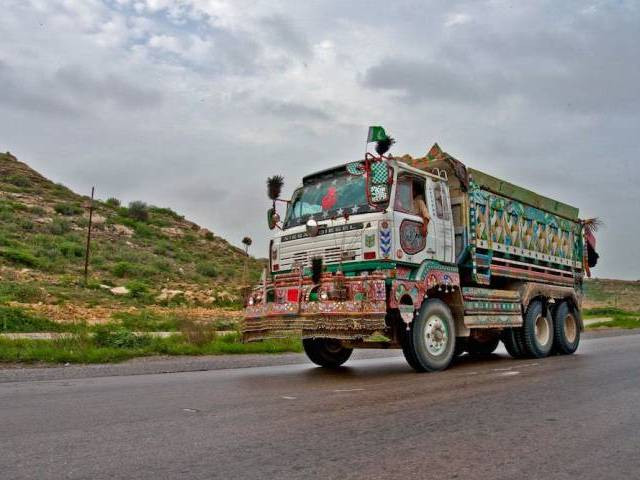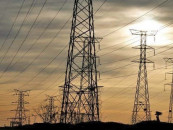Pakistan lagging behind other South Asian states
Economic growth no match with countries like Myanmar where GDP growth is 8.6%

Economic growth no match with countries like Myanmar where GDP growth is 8.6%. PHOTO: ADB
During 2016, the GDP growth of Myanmar was 8.6%, Bhutan 8.4%, India 7.5% and Bangladesh 6.6%. What are the other neighbouring countries doing right that Pakistan is getting wrong?
Think tank calculates GDP growth at 3.1%
For example, let’s look at Myanmar, which had been isolated and stagnant for decades but has already started outperforming Pakistan in many areas. When Myanmar started on its new economic path in 2013 through its “Framework for Economic and Social Reform (FESR)”, it was the same year that the current ruling party in Pakistan assumed power and started working on its economic reforms.
Three years later, Myanmar’s fast-paced economic reforms have resulted in making that country achieve the highest growth rates in Asia, while Pakistan’s sluggish reform pace has improved its growth rate somewhat but still left it at the bottom of the ladder of the South Asian economies.
What lessons can our economic policy managers learn from Myanmar? What have been the key differences in economic policies between the two countries?
Economic Survey 2015-16: Off target, once again
First, Myanmar opted for opening up while Pakistan moved towards isolationism. In just three years, Myanmar’s degree of openness to international trade, measured by the ratio of total trade to GDP grew from 37% to 47%; in the case of Pakistan this ratio fell from 33% to 28%.
Second, Myanmar paid serious attention to its taxation reforms. It lowered tax rates particularly on international trade. As a member of ASEAN free trade area, it now allows duty free import of almost 93% of tariff lines from the region.
On the other hand, over the past three years, Pakistan has been increasing tax rates, particularly indirect taxes.
Before the current government assumed power, almost 40% of the tariff lines covering essential raw materials and machinery were exempt from customs duty, now there are almost none.
The 32% jump in overall collection of custom duty, while apparently an achievement, actually comes at the cost of unprecedented fall in our exports and further isolation of Pakistan’s economy, a fact that the policymakers seem to be unaware of.
Bhutto's economic policies were disastrous for Pakistan
Similarly when it assumed power, the overall sales tax rate was 16% in 2013, now it is 17 to 20%. Whereas some essential services that were always exempted, such as education and internet, have been heavily taxed for the first time and students are paying sales tax on their tuition fees. The third factor responsible for the high growth of Myanmar is the various incentives it provides to advance the use of Information Communication Technology (ICT).
Pakistan, on the other hand, having experienced high growth rates after the liberalisation of telecom and ICT services in 2003, has been singling out this sector to slap prohibitively higher taxes for over the past four years.
Fourth, through its reform process, Myanmar encouraged Foreign Direct Investment (FDI), which totalled $9.4 billion in 2015-16. On the other hand, with its increasing protectionist policies, FDI in Pakistan has been shrinking and now the net FDI has plummeted to less than $1 billion - about one tenth of Myanmar’s.
To sum up, the current government’s belief in economic nationalism has isolated Pakistan from its neighbours and the rest of the world, whereas the policies of the other South Asian countries aim to integrate their economies with their regional and global partners.
Since the 1970s, Pakistan saw a gradual gulf opening between it and the East Asian countries such as South Korea, Malaysia and Singapore and now those nations are in another league. The same may now be happening vis-à-vis other South Asian countries who are moving at a very different pace compared to Pakistan.
Pakistan faces Rs3.3 trillion revenue black hole, says IMF
If we do not want our country to be left behind, it is not enough to feel satisfied with the moderately better performance of the present government compared to the very poor performance of the previous one. What is needed is to benchmark with our South Asian neighbours. We need a paradigm shift in our economic policies if we do not want to see Pakistan as the poorest country in South Asia.
The writer served as Pakistan’s ambassador to WTO from 2002 to 2008
Published in The Express Tribune, August 8th, 2016.
Like Business on Facebook, follow @TribuneBiz on Twitter to stay informed and join in the conversation.



















COMMENTS
Comments are moderated and generally will be posted if they are on-topic and not abusive.
For more information, please see our Comments FAQ